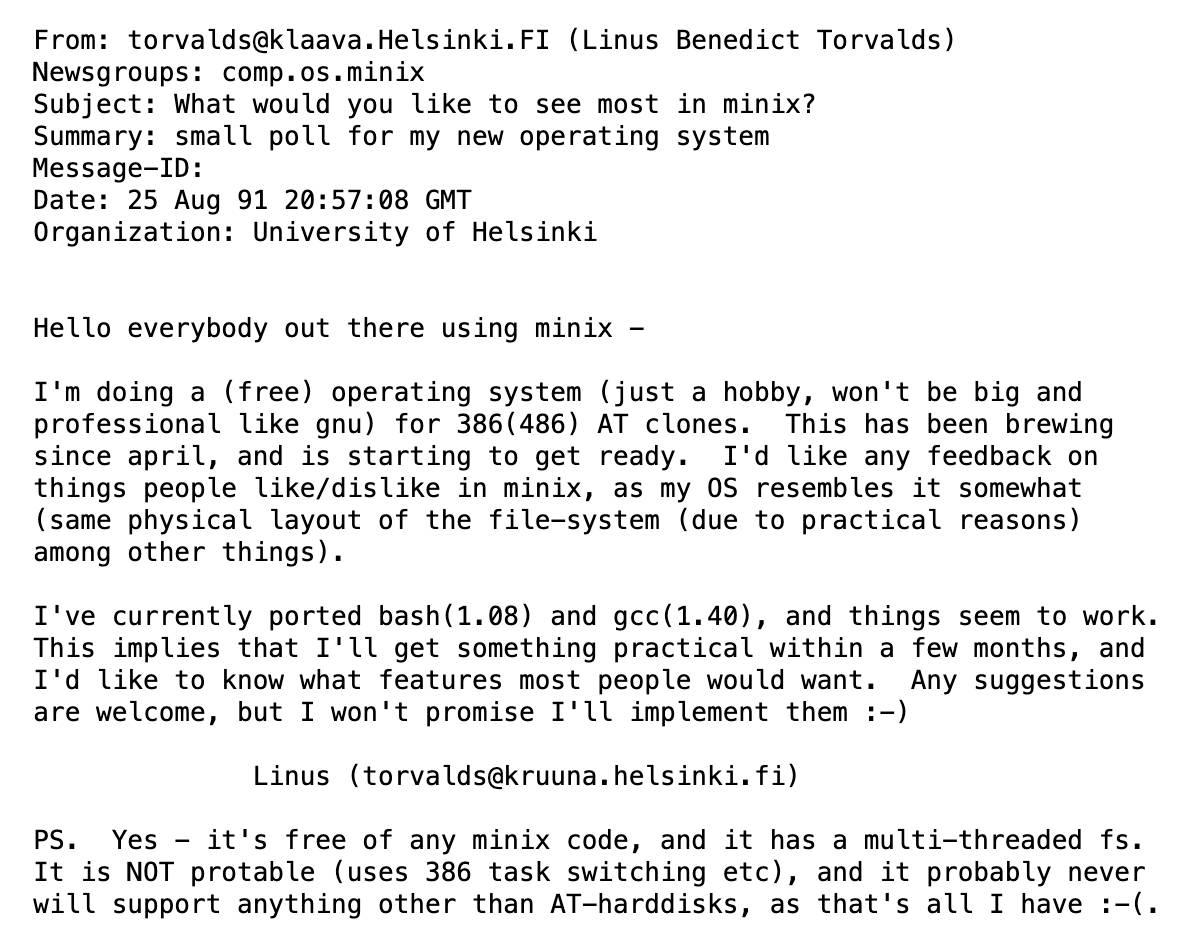this post was submitted on 25 Aug 2024
1380 points (98.7% liked)
Linux
49110 readers
1002 users here now
From Wikipedia, the free encyclopedia
Linux is a family of open source Unix-like operating systems based on the Linux kernel, an operating system kernel first released on September 17, 1991 by Linus Torvalds. Linux is typically packaged in a Linux distribution (or distro for short).
Distributions include the Linux kernel and supporting system software and libraries, many of which are provided by the GNU Project. Many Linux distributions use the word "Linux" in their name, but the Free Software Foundation uses the name GNU/Linux to emphasize the importance of GNU software, causing some controversy.
Rules
- Posts must be relevant to operating systems running the Linux kernel. GNU/Linux or otherwise.
- No misinformation
- No NSFW content
- No hate speech, bigotry, etc
Related Communities
Community icon by Alpár-Etele Méder, licensed under CC BY 3.0
founded 5 years ago
MODERATORS
you are viewing a single comment's thread
view the rest of the comments
view the rest of the comments

Or he could have used brackets.
I've never seen that being used, but it seems it's a thing in English. What if you wanna best deeper? Do you go {}? Then <>? «»?
Not really an English thing so much as a math thing that makes too much sense to not use elsewhere. For instance, in math you might have x[3 - 7{3y + (a * b)}]. I haven't actually seen them go deeper than three sets, though, so I'm not sure what would be next.
at that point I start recycling them, and go back to parenthesis.
so when bp = 300x - 3, this:
4( 4[ 4{ 15bp + 10 } - 375 ] - 2250 ) - 15000
would turn to
4( 4[ 4{ 15( 300x - 3) + 10 } - 375 ] - 2250 ) - 15000
perhaps not the best, but I rather stick to conventional symbols rather than using... idk, question marks? that'd be funny as hell, though
just picture it:
4© 4« 4¿ 15bp + 10 ? - 375 » - 2250 🄯 - 15000